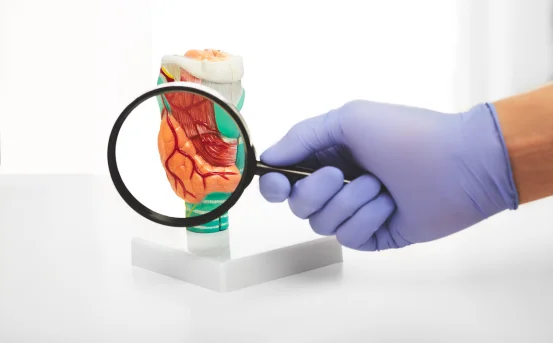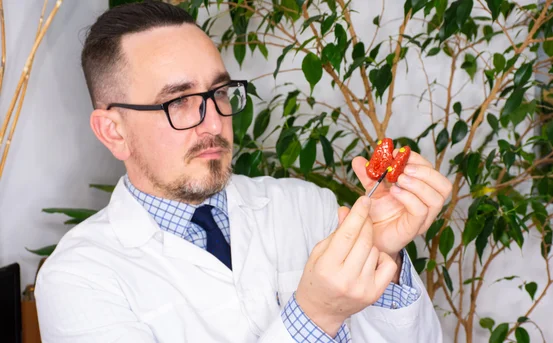Interstitial Cystitis (IC), often referred to as painful bladder syndrome, is a chronic condition characterized by recurring discomfort or pain in the bladder and surrounding pelvic region. Unlike regular urinary tract infections (UTIs), which are caused by bacteria, interstitial cystitis is not infectious, and antibiotics are generally ineffective. This condition can significantly impact a person’s quality of life, affecting physical comfort, emotional wellbeing, sexual health, and even sleep.
Despite being recognized for decades, interstitial cystitis remains complex and often misunderstood, both by patients and healthcare professionals. The symptoms mimic those of other urological disorders, making it difficult to diagnose and manage without a comprehensive approach.
What is Interstitial Cystitis?
Interstitial cystitis is a chronic, inflammatory condition of the bladder wall that leads to bladder pressure, bladder pain, and sometimes pelvic pain. The severity can range from mild discomfort to intense, debilitating pain. While the condition is more commonly diagnosed in women, men and even children can also be affected.
Many people living with IC report frequent urination, sometimes needing to urinate up to 60 times per day, even during the night (nocturia). The bladder may feel constantly irritated or inflamed, even when tests show no presence of infection.
The exact cause of interstitial cystitis is still not clearly understood. It is believed to be multifactorial, involving immune dysfunction, nerve hypersensitivity, and a breakdown of the bladder’s protective lining. This complexity often leads to frustration for patients who may consult multiple specialists before receiving a correct diagnosis.
The Symptoms of Interstitial Cystitis
The symptoms of IC can vary widely from person to person and may fluctuate over time. Commonly reported symptoms include:
- Chronic pelvic pain or pressure
- A persistent urge to urinate, even right after emptying the bladder
- Frequent urination, often in small amounts
- Pain during sexual intercourse (dyspareunia)
- Pain or discomfort that worsens as the bladder fills and is relieved after urination
- Pain that radiates to the lower back, urethra, or thighs
Some people experience flares where symptoms suddenly intensify, often triggered by stress, specific foods, hormonal changes, or sexual activity.
In women, symptoms may be worse during menstruation, while men may experience pain in the penis or scrotum, sometimes leading to confusion with prostatitis.
What Causes Interstitial Cystitis?
There is no single known cause of interstitial cystitis. Research suggests that it may result from a combination of factors:
- Defective Bladder Lining :- The inner lining of the bladder (urothelium) may become “leaky,” allowing toxic substances in urine to irritate the bladder wall. This irritation may lead to inflammation and pain.
- Autoimmune Reaction :- In some cases, the body’s immune system may attack the bladder lining, much like in other autoimmune diseases. This could lead to chronic inflammation.
- Nerve Hypersensitivity :- People with IC may have an overactive or sensitized nervous system that amplifies bladder pain signals, leading to heightened discomfort even when the bladder is not full.
- Genetic Predisposition :- Family history may play a role in developing IC, although no specific gene has been directly linked yet.
- Allergic or Inflammatory Triggers :- Some theories suggest that certain environmental factors, infections, or allergies may act as triggers in people who are already predisposed.
How is Interstitial Cystitis Diagnosed?
Diagnosing IC can be challenging and time-consuming, as there is no single definitive test. The process typically involves ruling out other conditions such as:
- Urinary tract infections
- Overactive bladder
- Bladder cancer
- Kidney stones
- Sexually transmitted infections (STIs)
- Prostatitis in men :- A urologist may perform a thorough history and physical exam, including a pelvic exam. Other diagnostic steps might include:
- Urinalysis & Urine Culture
- To exclude bacterial infections.
- Cystoscopy :- A thin, lighted instrument is inserted into the bladder to inspect the bladder lining and detect abnormalities, such as Hunner’s ulcers distinctive lesions found in some IC patients.
- Bladder Diary :- Patients may be asked to record fluid intake, urination frequency, and pain levels over several days.
- Urodynamic Testing :- Measures how the bladder holds and releases urine, helpful in complex cases.The diagnosis of interstitial cystitis is often clinical, based on symptoms and exclusion of other diseases.
Treatment Options for Interstitial Cystitis
There is no cure for interstitial cystitis, but multiple treatment options can help manage symptoms. Treatment is typically personalized, and patients may need a combination of therapies.
- Lifestyle and Dietary Changes :- Avoiding potential triggers like alcohol, caffeine, citrus, spicy foods, and artificial sweeteners can significantly reduce symptom severity. Keeping a food diary helps identify specific irritants.
- Bladder Training :- Gradually increasing the time between urinations can help the bladder hold more urine and reduce urgency.
- Medications
- Oral medications such as amitriptyline (a tricyclic antidepressant) or pentosan polysulfate sodium (approved specifically for IC) may help.
- Antihistamines can reduce inflammation.
- Pain relievers may be prescribed during flares.
- Bladder Instillations :- Medications like heparin, lidocaine, or DMSO can be delivered directly into the bladder via a catheter to coat the lining and reduce inflammation.
- Physical Therapy :- Pelvic floor physical therapy can relieve muscle tension and improve pelvic function, especially in patients with tight or spastic pelvic muscles.
- Neuromodulation :- Nerve stimulation techniques like sacral nerve stimulation or TENS (Transcutaneous Electrical Nerve Stimulation) may be used to regulate pain signals.
- Surgery (Rare Cases) :- Surgery is considered only for severe, refractory cases. It may involve bladder augmentation or even bladder removal, though these procedures are extreme and not commonly recommended.
Living with Interstitial Cystitis
Living with IC often requires long-term management, patience, and a multidisciplinary approach. Many people find it helpful to join support groups, work closely with their healthcare team, and make mental health support a part of their routine care.
The emotional toll of IC can be high, leading to anxiety, depression, and social withdrawal. Mind-body techniques, such as yoga, meditation, and cognitive-behavioral therapy (CBT), can play a beneficial role in managing stress and pain perception.
Although IC is a chronic condition, many individuals are able to achieve symptom control and lead fulfilling lives with the right combination of treatments and lifestyle adaptations.
Conclusion
Interstitial cystitis is a complex and often misunderstood condition that goes beyond just a “bladder problem.” It affects multiple systems and requires a holistic, individualized approach for effective management. Early diagnosis, awareness, and tailored treatments can significantly improve quality of life.
If you’re experiencing symptoms that suggest interstitial cystitis, don’t ignore them. Consult a urologist or healthcare provider to get a proper evaluation and explore the best options for managing this life-altering condition. With the right care, hope and healing are possible.























